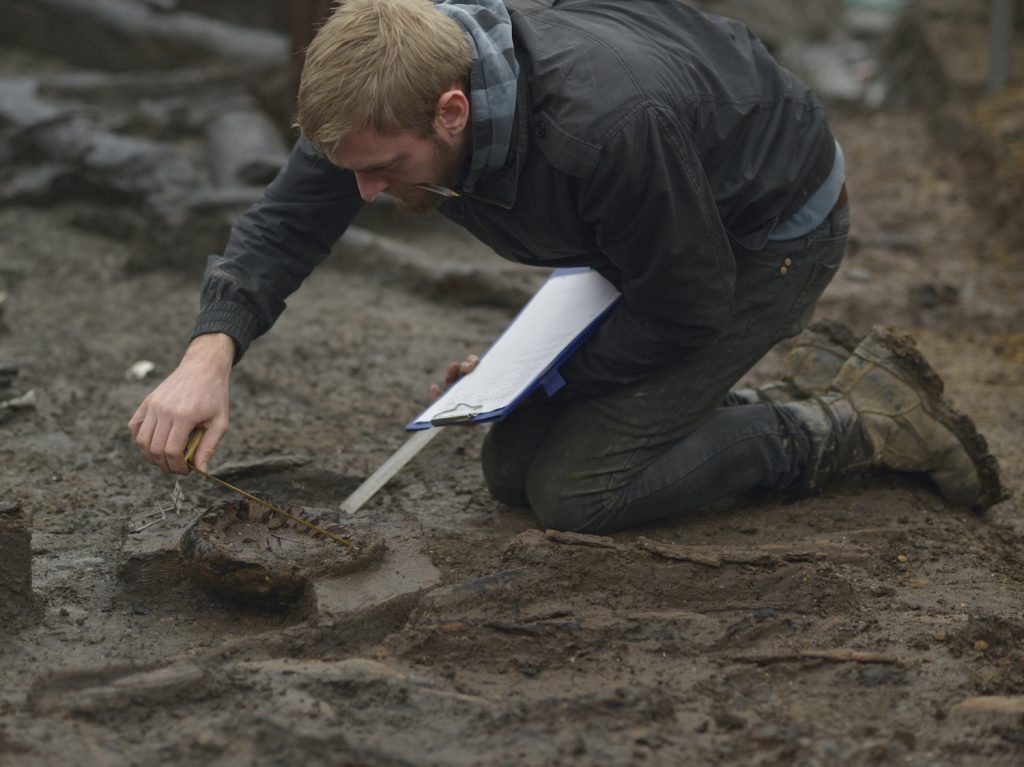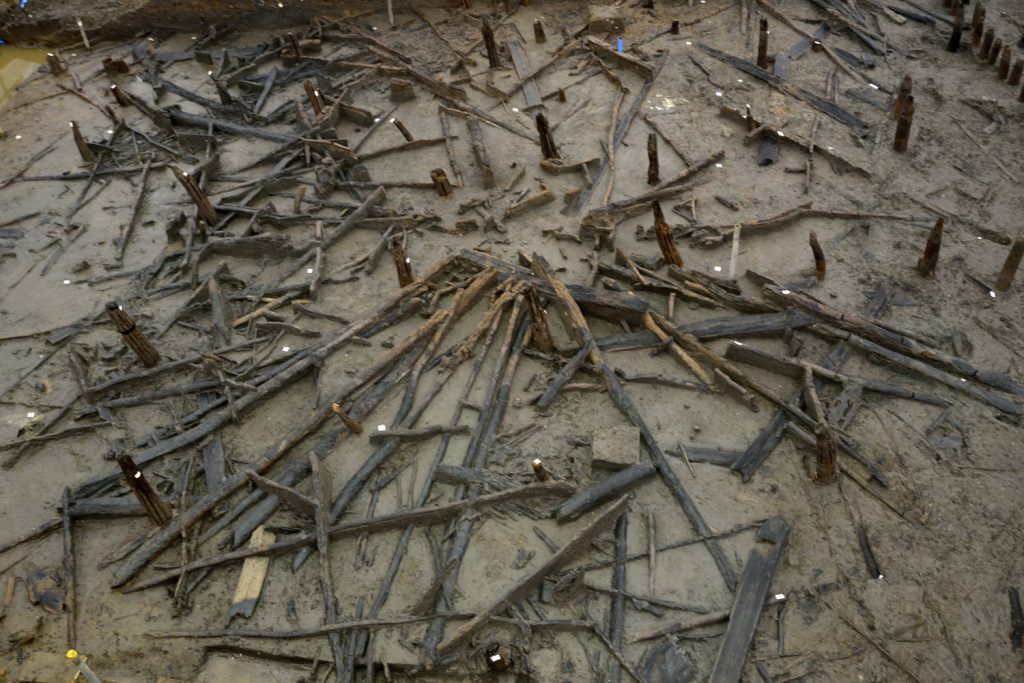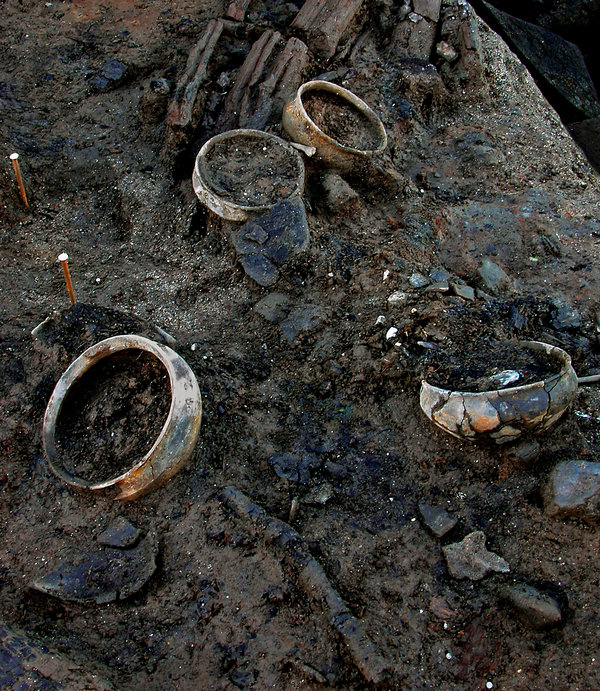Everyday Life In A Bronze Age Village Emerges In U.K. Excavation

Everyday Life In A Bronze Age Village Emerges In U.K. Excavation
What did villagers eat for dinner in England 3,000 years ago? And what did they wear?
These are the kinds of questions archaeologists claim that a Bronze Age-era discovery can answer some 80 miles north of London at the Must Farm Quarry.

In an interview with All Things Considered, David Gibson of Cambridge Archeological Unit says
“What’s special about this is, it’s not the archaeology of the important people. It’s not burial mounds. This is the archaeology of the home,”
The research team says say these circular Bronze Age homes were perched on stilts above a river.
Archaeologists believe that when the fire started, the residents fled and their homes sank into the river where they were preserved by the silt, creating a unique snapshot of everyday life thousands of years ago.

Among this treasure trove are whole pots with food inside, textiles made from plant fibers, a longboat, weapons and colorful beads.
Gibson says they’re sending off pots for analysis. “It might even tell us exactly what their last meal was before the fire struck,” he says. And somewhat chillingly, “we know it was sudden because one of the pots with the food still had its wooden spoon stuck in it.”
He adds that they’ve found 29 complete food vessels and pots, ranging in size from 2 feet high to 2 inches.
“It’s almost like someone has gone to the department store and ordered the full set for their house,” Gibson says.
It’s the “best-preserved Bronze Age dwellings ever found in Britain,” preservation group Historic England says in a statement.
Historic England and the Forterra Quarry are funding this $1,588,000 project over four years.

“Normally, when we do archaeology, we see the decay of a settlement, we see it going out of use, and we see the slow back-fill over time of the ditches and the pits. We don’t see a snapshot.
So this is almost like, you get the opportunity to peek through the curtains and see people actually in their daily moment,” archaeologist Selina Davenport told the BBC.
Archaeologists are still excavating the site. They say the findings will eventually be displayed at nearby museums.